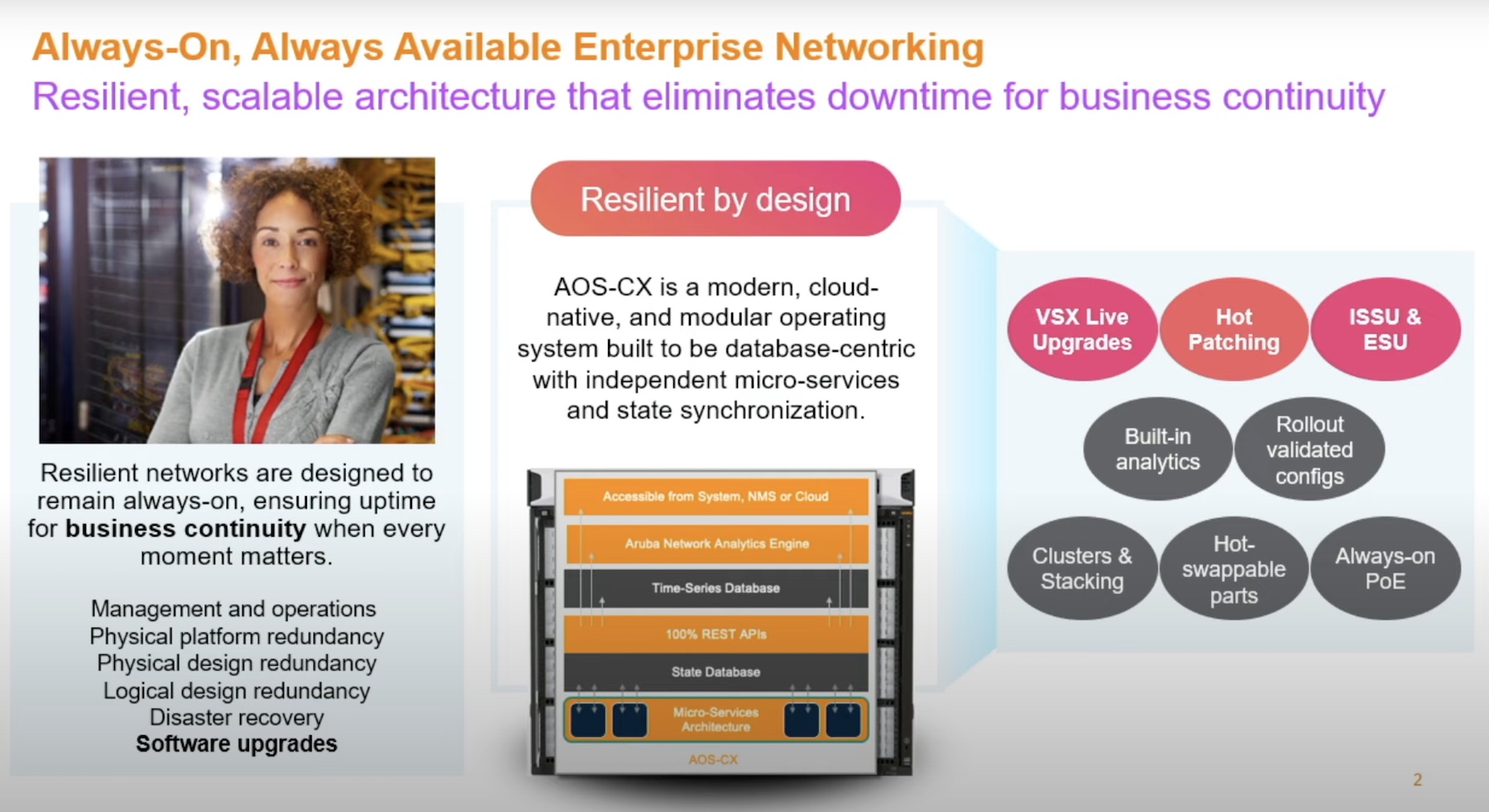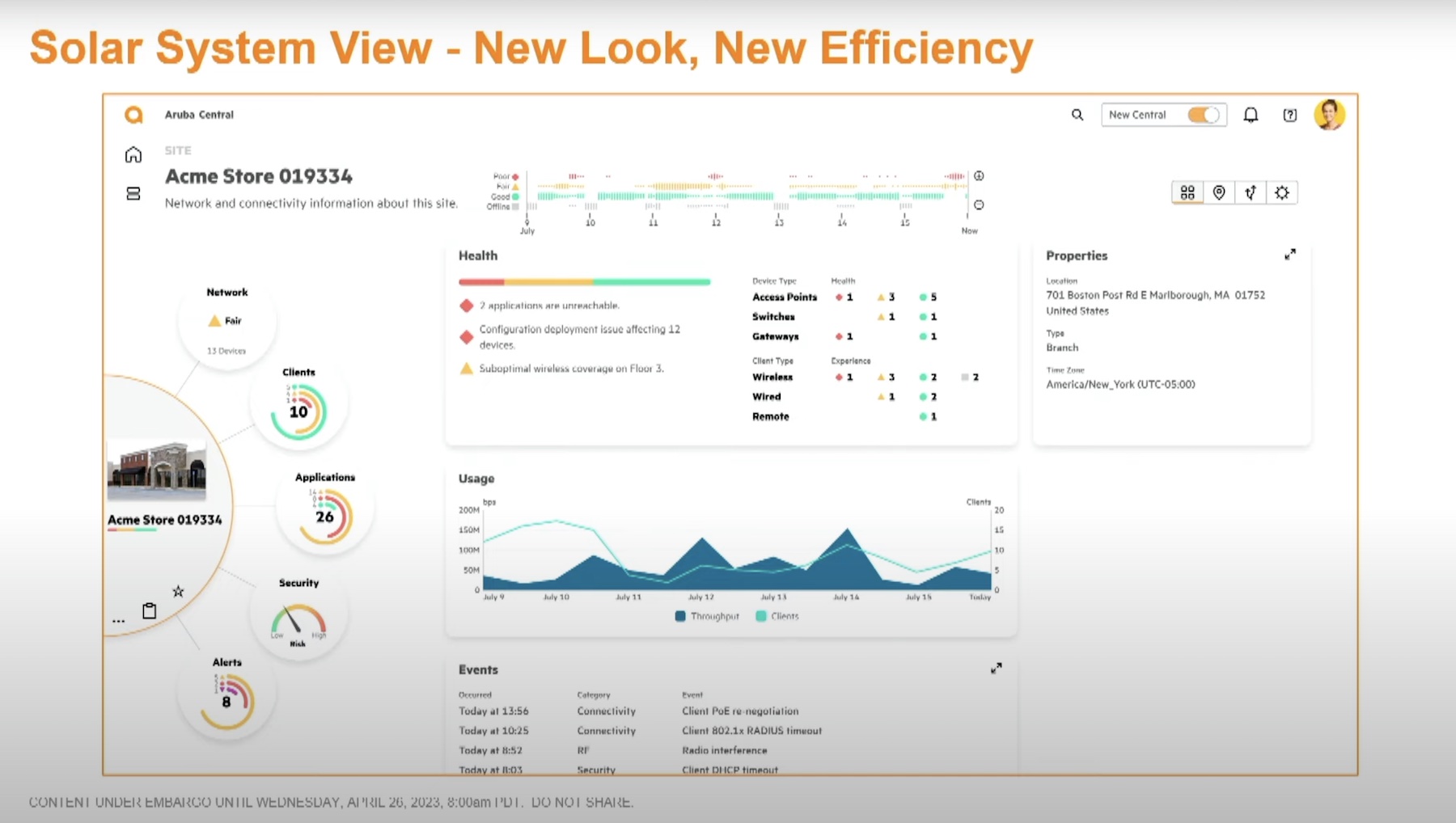Wading to the multiples of enterprise class switch offerings can a daunting task. Trying to compare products and determine what best fits ones’ organization isn’t the easiest responsibility to have and making the wrong decision can have lasting impacts on an organization. That’s why enterprise organizations put a lot of trust into their vendor to deliver a product that holds up to the ROI challenge and delivers competitive performance, advanced features, and easy management. Aruba, a Hewlett Packard Enterprise company just so happens to be one of those vendors that many lay their trust in. With the new Aruba 8400 Switch series Aruba claims to have changed the game. There are several points to highlight when it comes to the 8400. Let’s start from the ground up.
The Hardware
It’s a software world they say. Sure, but that doesn’t mean we have to neglect good hardware design. Aruba has crossed their T’s and dotted their I’s with this one and they’ve done it in a big way.

As it stands right now, the 8400 is designed for Campus Aggregation & Core L2/L3 Ethernet deployments. It’s not designed to be a data center class switch. It’s an 8 RU x 26.0” deep box and it’s definitely got some weight to it, coming in at about 250 lbs loaded. It supports 1.2 Tb/s of ingress and egress forwarding per slot, and a 1.8 Tb/s Fabric Interface In+Out . It’s a 99.999% available redundant passive chassis. It’s the real deal.

Power modules sit behind the front bezel and you can slide them out without unplugging the cable on the rear of the switch. The line cards are 1RU. The back side sports several fan modules and the fabric cards sit on the inside of them.

Looking at the view from the side you can see how the line cards and management modules seat in the fabric cards.

One thing that really impressed me is the hardware design. Have a look at the following image.

This is the back of the switch with one of the fan modules removed. Notice the metal trap that drops down, controlling the airflow inside the chassis and preventing it from becoming a giant dust buster.
As I mentioned, Aruba has spent some time on the design of the 8400 and it shows.
The Software
Aruba OS-CX is the modern programmable OS delivered with the 8400. This OS is based on a Linux distribution and you can get to the bash shell. The caveat that comes along with that is you will not be supported if you start messing with things in the bash shell. The OS is built on Linux so as not to reinvent the wheel, however it’s not intended that you work from the bash shell. In fact, there is a CLI but it’s just there to make you feel good. Aruba prefers you work from the Web UI which is very clean.

Programmability
OS-CX has an HTTP REST API that is very well documented.

Their goal was to offer a product that was 100% programmable from day one and they actually pulled it off. Everything is stored in a current state database and that database is exposed via the REST API. A neat feature that was demonstrated at Networking Field Day Exclusive was the interaction with the 8400 using Google Sheets. That demonstration is embedded below.
Intelligent and Programmable Core: Aruba 8400 REST API Demo from Stephen Foskett on Vimeo.
Configuration Check pointing
Another fantastic feature of OS-CX is the configuration check pointing.

With this feature one can rollback to any checkpoint without the need to reboot the system. I can’t count how many times I’ve needed to rollback with no good way to do it without a reboot. This should be something every OS provides. I’m happy to see it here in Aruba’s OS-CX.
Final Thoughts
While all the pieces are there I think the big sell for the Aruba 8400 lies in itsintegrated Aruba Network Analytics Engine and automated root cause analysis capability.

While I don’t intend to fully discuss that capability in this article I do want to mention it because the culmination of good hardware and software may not be enough in todays market. I think a key differentiator is how Aruba has built this analytics piece into the puzzle right up front. The folks at Aruba have planned well for this offering and I think it shows. I am curious how this trickles down into other products and even how it plays a role in the overall vision of Aruba but time will tell. For now take a look at the video on Network Analytics Engine and automated root cause analysis and you can be the judge.





[…] Lofty Goals for The Campus Core: Aruba 8400 Series and OS-CX […]